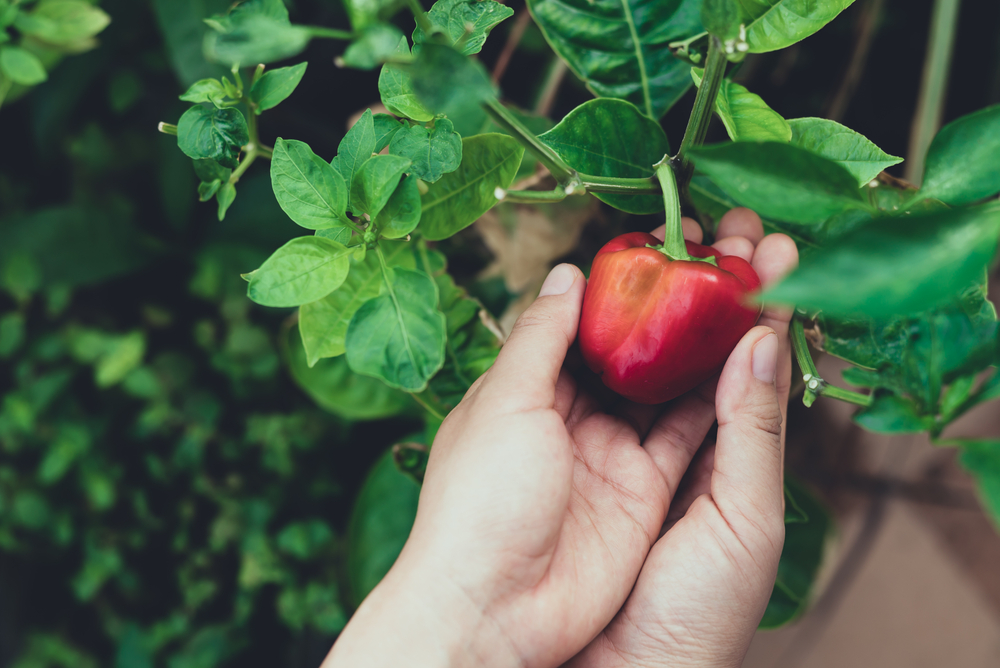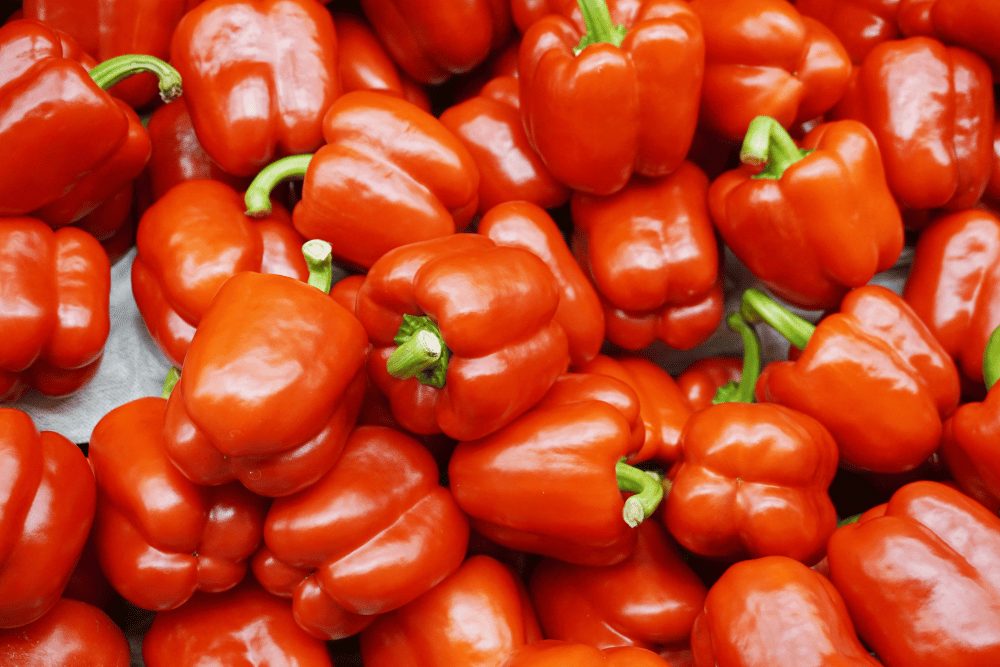The famous bell pepper's sweet and spicy cousin is the real belle of the ball. cajun belle peppers are a unique combination of bell pepper sweetness and jalapeno-like spice that brings the flavor to the party.
What Is A cajun belle Pepper?
Cajun belle peppers have a very similar appearance to the common bell pepper. These 4-lobed members of Capsicum annuum, sometimes referred to as mini-bell peppers, go from green to red when left on the vine to ripen.
Cajun belles are compact and prolific, producing up to 50 fruits per individual pepper plant during the growing season. Their standout flavor, vigorous growth, and beautiful colors earned them recognition as the All-America selections winner in 2010.
All-America Selections is a non-profit group providing information and resources on new varieties of plants for the backyard gardener. Being chosen as an AAS winner is an honor that puts the spotlight on the cajun belle pepper, making it a popular choice for many growers.
What’s The Difference Between A cajun bell Pepper And A Sweet bell Pepper?
Although they have a lot in common, the cajun belle and sweet bell peppers aren’t the same.
Some of the most distinguishing differences include the following:
- Smaller. The fruit size of the cajun belle is 2-3 inches, whereas the common bell pepper is 3-7 inches.
- Faster to mature. Cajun belles mature in approximately 60 days, and typical bells are closer to 100 days.
- Flavor profile. While both the cajun belle and common bell peppers have a crisp sweetness, the cajun belle has a distinct spiciness that sets it apart, while regular bell peppers have 0 SHUs.

How Hot Is A cajun belle Pepper?
Although not considered a hot pepper, the cajun belle measures 500-4,000 Scoville heat units (SHU), similar to a Poblano pepper. This variance has to do with the maturity of the fruit. When the fruit is a deep red, the cajun belle will have developed the most heat.
The chart below clarifies how the cajun belle’s heat level measures against some of its well-known cousins.
- Habanero pepper, 100,000 – 350,000 SHUs
- Jalapeno pepper, 2,500 – 8,000 SHUs
- cajun belle pepper 500 – 4,000 SHUs
- Red bell pepper 0 SHUs
Can You Eat Green cajun bells?
Yes! Like other peppers, cajun belle peppers start out green and then ripen to red. You can harvest and eat green cajun belles. They will be less spicy, and will have a fresh, crisp, and verdant flavor similar to a regular green bell pepper.
What Are The Uses For cajun belle Peppers?
There’s no shortage of ways to use cajun belle peppers. Anywhere you’d use a common sweet pepper, you can use a cajun belle. Just expect a bit more heat!
They can be added to salads, sauteed, or used to create a mild fresh salsa. Try using them instead of the regular bell pepper for an elevated version of stuffed peppers.

Remember that the heat level in cajun belle peppers increases as the pepper ripens. So, if you want your pepper on the milder side, choose those that are still green or just starting to turn red.
Where To Buy Them
Fresh cajun belle peppers can be elusive. Some grocers or specialty markets may carry them, but tracking them down could take some effort.
Finding seeds and cajun belle pepper plants, however, is more straightforward. If you’re really interested in adding this pepper to your kitchen, you’re best off growing them.
Can You Grow Them?
The best way to get fresh cajun belle peppers is to grow them yourself. They’re a perfect choice for the backyard gardener who enjoys growing heirloom veggies and wants to try something new.
Spring is the ideal planting time for cajun belle peppers, giving them time to fruit throughout the summer. These compact pepper plants are great for containers and need the following to produce to their fullest:
- Full sun
- Adequate spacing between plants: 18-24 inches is recommended.
- Well-drained soil with regular watering.
- Support for the plants as they grow. The fruit can become heavy and cause the plant to bend.
Cajun belles do best in USDA hardiness zones 11-12 when the low temperatures no longer dip below 40 degrees Fahrenheit.
If the day’s heat gets above 100 degrees Fahrenheit, providing shade for your plants can prevent sunburn.
They’re also perfect companion plants for other home gardener favorites like cucumbers and tomatoes.
It can take 60-90 days to harvest if planted from seed.
When To Pick cajun belle Peppers
You can pick cajun belle peppers at any point in their growth cycle. They will begin green and ripen to a deep red over time.
As with all peppers, the longer they’re on the plant, the spicier the fruit. So, when you pick is a matter of what flavors and spice levels you prefer.
Substitutes For cajun belles
If cajun belle peppers aren’t readily available, several suitable substitutes exist.
A common bell pepper will suffice, but if you’re looking for something with a bit more punch, the following may be more attractive choices:
- Cubanelle peppers. Cuban pepper resembling a Banana pepper with a mild to moderate heat level.
- Cascabella peppers: Smaller, waxy-looking pepper that can register higher on the Scoville heat scale than cajun belles. Their smaller size will make them difficult to stuff, but otherwise a good flavor choice.
- Carmen peppers: Larger Italian pepper with a thick skin perfect for stuffing. Their sweet and fruity flavor makes them a popular choice for grilling and roasting, but they have very little heat.

